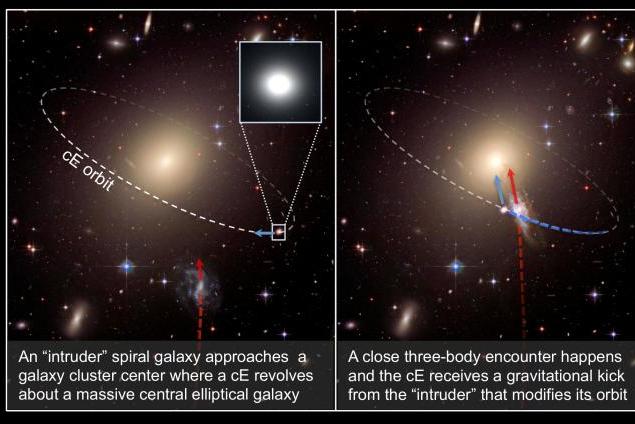Astronomers Locate 11 Runaway Galaxies

Astronomers have previously identified runaway stars, and even star clusters. But this is the first time researchers have located galaxies expelled from their origins.
The discovery came as researchers attempted to locate new examples of a special class of galaxies called compact ellipticals. Compact ellipticals are galaxies too big to be just star clusters, but much, much smaller than regular galaxies.
Whereas the Milky Way stretches 100,000 light-years across, compact galaxies occupy an expanse measuring just a few hundred light-years. The tiny galactic blobs weigh more than 1,000 times less than spiral galaxies like the Milky Way and the Andromeda Galaxy.
The search was successful. Astronomers at the Harvard-Smithsonian Center for Astrophysics found nearly 200 previously unidentified compact ellipticals. Of those, 11 were isolated — far from any other galaxies or star clusters.
Researchers assumed most of these galaxies were so small because they had been stripped of their stars by other larger galaxies. For this reason, it was predicted compact ellipticals would always be beside large neighbors.
The isolated galaxies, however, were alone and moving fast — faster than their peers and faster than escape velocity.
But why, scientists wondered?
“We asked ourselves, what else could explain them? The answer was a classic three-body interaction,” astronomer Igor Chilingarian, lead author of a new study on the loner galaxies,said in a press release.
The interaction has previously been used to explained loner stars. In this scenario, a binary star system ventures too close to a black hole. One of the stars is swallowed, while the other is flung into space.
A similar situation could occur with three galaxies, researchers supposed. The isolated galaxy is first stripped of its stars by a bigger neighbor, and a third galaxy enters the fray and pushes the shrunken elliptical out into space.
“These galaxies are facing a lonely future, exiled from the galaxy clusters they used to live in,” Chilingarian said.
Their fates as loners are detailed in the journal Science.





